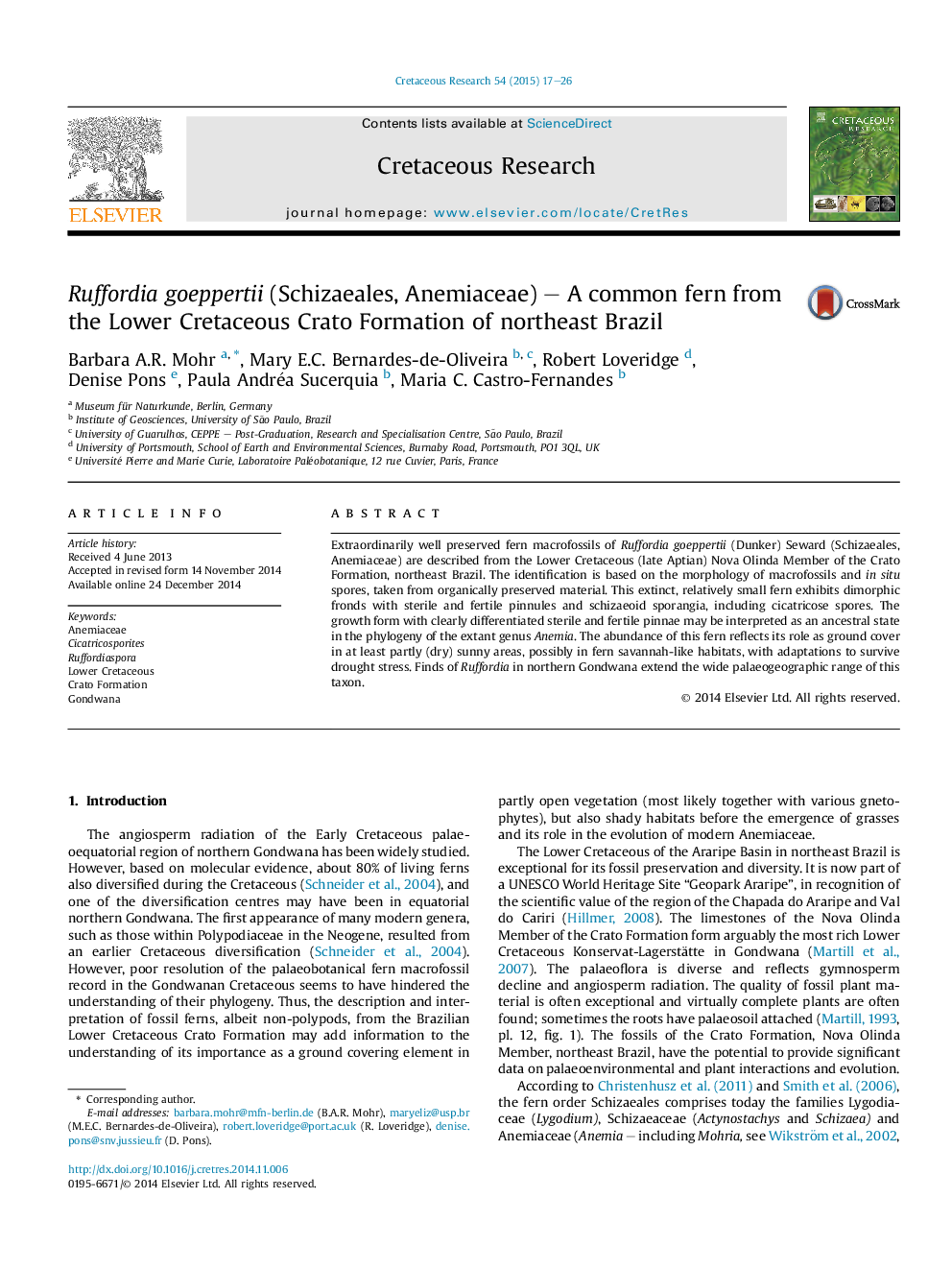| Article ID | Journal | Published Year | Pages | File Type |
|---|---|---|---|---|
| 4747089 | Cretaceous Research | 2015 | 10 Pages |
•In situ spores demonstrate close relationships of the fossil fern to the extant genus Anemia and fossil Ruffordia.•Ruffordia's growth form with its poorly defined division of fertile and sterile stipes may be an ancestral state of extant Anemia.•The role of drought stress tolerant Ruffordia in the Crato palaeoecosystem as a ground cover of (dry) sunny, savannah-like habitats, is discussed.
Extraordinarily well preserved fern macrofossils of Ruffordia goeppertii (Dunker) Seward (Schizaeales, Anemiaceae) are described from the Lower Cretaceous (late Aptian) Nova Olinda Member of the Crato Formation, northeast Brazil. The identification is based on the morphology of macrofossils and in situ spores, taken from organically preserved material. This extinct, relatively small fern exhibits dimorphic fronds with sterile and fertile pinnules and schizaeoid sporangia, including cicatricose spores. The growth form with clearly differentiated sterile and fertile pinnae may be interpreted as an ancestral state in the phylogeny of the extant genus Anemia. The abundance of this fern reflects its role as ground cover in at least partly (dry) sunny areas, possibly in fern savannah-like habitats, with adaptations to survive drought stress. Finds of Ruffordia in northern Gondwana extend the wide palaeogeographic range of this taxon.
